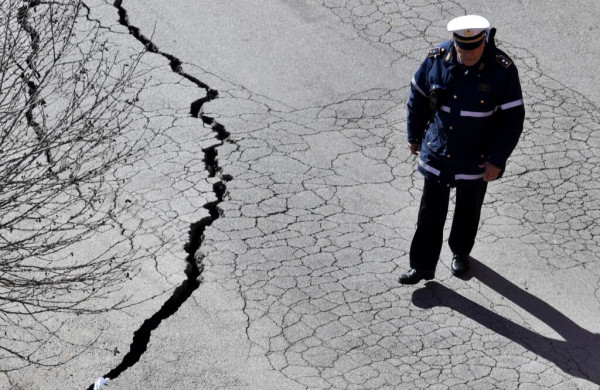EU signals end of free money for poorer countries
BRUSSELS — The European Commission is siding with a German-led group of fiscally conservative governments by resisting demands to finance spending through more borrowing — on top of a push to add conditions to the hundreds of billions of euros it gives the European Union's poorest nations.
In effect, it signals the end of an era of free money — when the bloc's massive post-pandemic recovery fund was made up of shared debt rather than national contributions, and when EU funds for things like new roads, hospitals and renewable energy projects were lavished mostly on eastern and southern European countries without them having to do anything in return.
The Commission, which is in charge of managing the EU's €1.2 trillion seven-year budget, predominantly funded by its members, is beginning to think about the version due to start in 2028. The questions will come to a head when countries negotiate how much money to allocate to different programs. The Commission will put forward a formal proposal in the summer of 2025, which will have to be unanimously approved by governments before the end of 2027.
The added complication this time round is that since the beginning of the last seven-year cycle, the EU created its emergency €723 billion post-pandemic recovery fund, which, for the first time in the bloc's history, was based on pooling borrowing on behalf of the 27 nations rather than from government contributions.
While several EU countries ― mainly those who are most in debt ― want this Recovery and Resilience Facility (RRF), to be replicated after its 2026 expiry to create an “investment fund,” the Commission is opposed, two senior Commission officials who were granted anonymity to discuss private deliberations told POLITICO.
To make matters worse for some poorer countries, the Commission wants to extend the cash-for-reforms model of the recovery fund to its existing “cohesion policy” — which is aimed at narrowing the gap between richer and poorer regions and makes up about a quarter of the entire budget.
That's not going to go down too well.
“Some countries will try to weaken reform conditionality … it's probably going to be one of the difficult points in the negotiations," Eulalia Rubio, a researcher at the Jacques Delors Institute think tank, said.
Politically sensitive
The EU executive is shying away from the idea of setting up such an investment fund — to finance defense and green spending in the coming years — over opposition from fiscally conservative countries including Germany and the Netherlands.
But capitals with higher debt levels fear that shelving the RRF will leave them with a huge shortfall in spending on long-term projects.
While the Commission doesn't get the final say in what the next EU budget looks like, its proposal will serve as a basis for negotiations between capitals. The most sensitive political decisions — such as whether to set up a new investment fund — will ultimately depend on the outcome of the European election in June and the make-up of the new executive.
Emergency instruments
The Commission thinks the cohesion fund can be used as a tool for forcing governments to carry out reforms on a range of issues ― including pensions and democratic standards ― that have been on the backburner for years.

This would mark a shift from the current model, where funding is paid on the basis of agreed criteria rather than as a carrot for meeting specific goals.
This would allow the Commission to continue enforcing its reforms across the bloc without taking up new debt or drastically increasing the size of its budget.
There is a significant overlap between the projects financed by the RRF and the cohesion fund. Both cash pots allocate a major share of money to poorer countries, such as Portugal in the west or Bulgaria in the east.
But officials point out that there are differences between the two.
“[Cohesion funding] has to be a long term development kind of approach; it has to involve local and regional partners,” the EU's commissioner for cohesion, Elisa Ferreira, said in response to a question from POLITICO. “All these elements are not necessarily found in emergency instruments” like the RRF.
Hard sell
Commission officials concede that they will have a hard time selling the new cohesion model to poorer member countries.
One government official said that countries currently struggling to use cohesion funding will hardly welcome stricter rules and a tighter link to reforms.
Member states complain that a mountain of red tape is preventing them from getting their hands on their share of RRF cash as it is.
“When I ask actors, when I ask municipalities, they say it's more difficult [to get money under the RRF than under the EU budget],” Margarida Marques, a Portuguese socialist MEP, said during an event this week.
But Rubio from the Jacques Delors Institute suggests that poorer capitals might ultimately have little leverage to oppose new rules.
The need to cough up fresh cash to boost growth in countries waiting to join — such as Ukraine and the Western Balkan states — and repay the post-pandemic debt might undermine calls for a bigger budget.
“If [member countries] fear losing money, they may be confronted with a situation where they don’t have a lot of capacity to ask for the same money without strings attached,” she said.